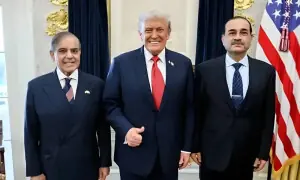Tesla CEO Elon Musk launches two-door robotaxi
Tesla Motors CEO Elon Musk unveiled a new robotaxi featuring gull-wing doors and no steering wheel or pedals at a high-profile event on Thursday. He also introduced a larger vehicle called the Robovan, as Tesla shifts its focus from being a low-cost automaker to a robotics manufacturer.
Musk arrived in a “Cybercab,” which he claims will enter production in 2026, priced under $30,000. He stated that operational costs would be around 20 cents per mile, utilizing inductive charging without plugs. The vehicles will rely on artificial intelligence and cameras instead of the additional hardware used by competitors, a strategy that investors and analysts consider technically and regulatory challenging.
“The autonomous future is here,” Musk declared, showcasing 50 fully autonomous cars, including Model Ys and the Cybercab, all driverless. He emphasized plans for a fleet of self-driving Tesla taxis that passengers can request via an app, allowing individual Tesla owners to earn money by listing their vehicles as robotaxis.
The event, titled “We, Robot,” referenced Isaac Asimov’s “I, Robot” stories and highlighted Musk’s vision of Tesla as an AI robotics company rather than a traditional automaker. Attendees included investors, analysts, and Tesla enthusiasts.
However, many investors left the event wanting more concrete timelines for robotaxi production, regulatory approvals, and a robust business plan to surpass competitors like Alphabet’s Waymo. One shareholder expressed disappointment, stating, “Everything looks cool, but not much in terms of timelines… He didn’t give much info.”
Musk acknowledged his tendency to be overly optimistic about timelines, recalling his 2019 confidence in launching operational robotaxis by the following year. After several missed targets, he shifted focus to the new vehicles while abandoning plans for a smaller, cheaper model crucial for addressing declining EV demand.
Read more
Musk previews Tesla’s humanoid robot, but cautions it is not ready just yet
Tesla posts record quarterly deliveries after price cuts, up 4% from Q4
Tesla may face its first decline in deliveries this year as buying incentives have fallen short of attracting customers to its aging EV lineup, compounded by significant price cuts that have pressured profit margins. The complex technology and stringent regulations have also resulted in significant losses for others in the robotaxi market, leading some to exit.
Despite these challenges, companies like General Motors’ Cruise, Amazon’s Zoox, and various Chinese firms continue to pursue the robotaxi vision. Musk is betting on a cost-effective approach, relying on cameras and AI instead of expensive lidar technology. However, his Full Self-Driving (FSD) system, which requires ongoing driver attention, has attracted regulatory scrutiny following fatal accidents involving its use.
“We expect to begin fully autonomous, unsupervised FSD in Texas and California next year,” Musk noted, referring to the Model 3 and Model Y, but he did not specify whether the robotaxis would incorporate any new technologies or rely solely on FSD.
For the latest news, follow us on Twitter @Aaj_Urdu. We are also on Facebook, Instagram and YouTube.





















Comments are closed on this story.